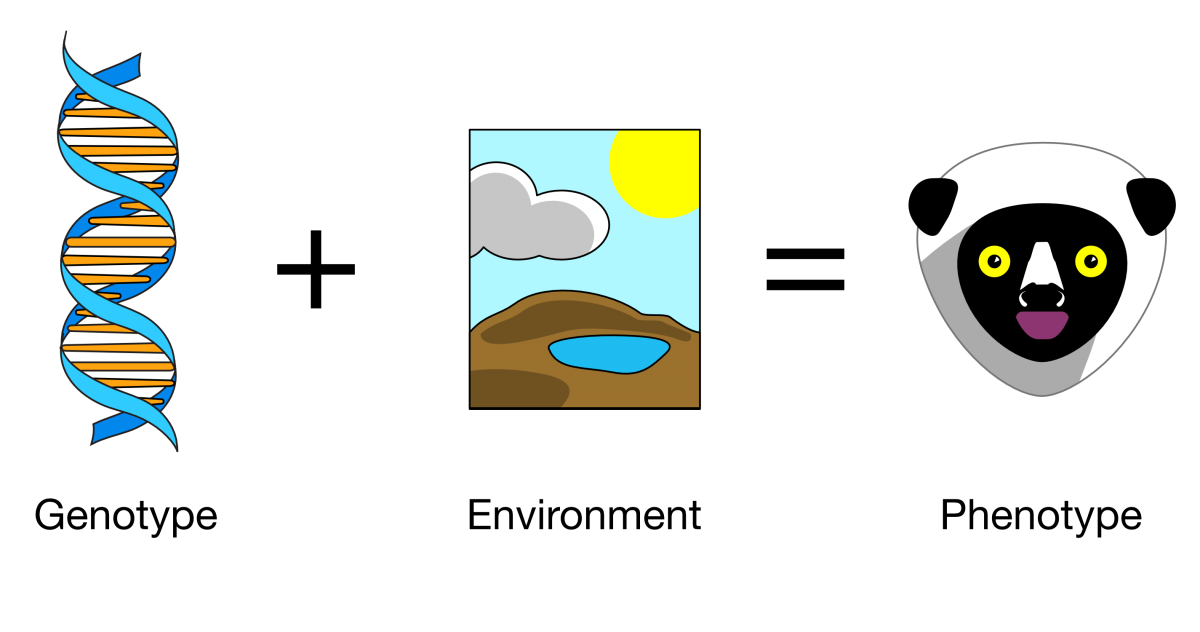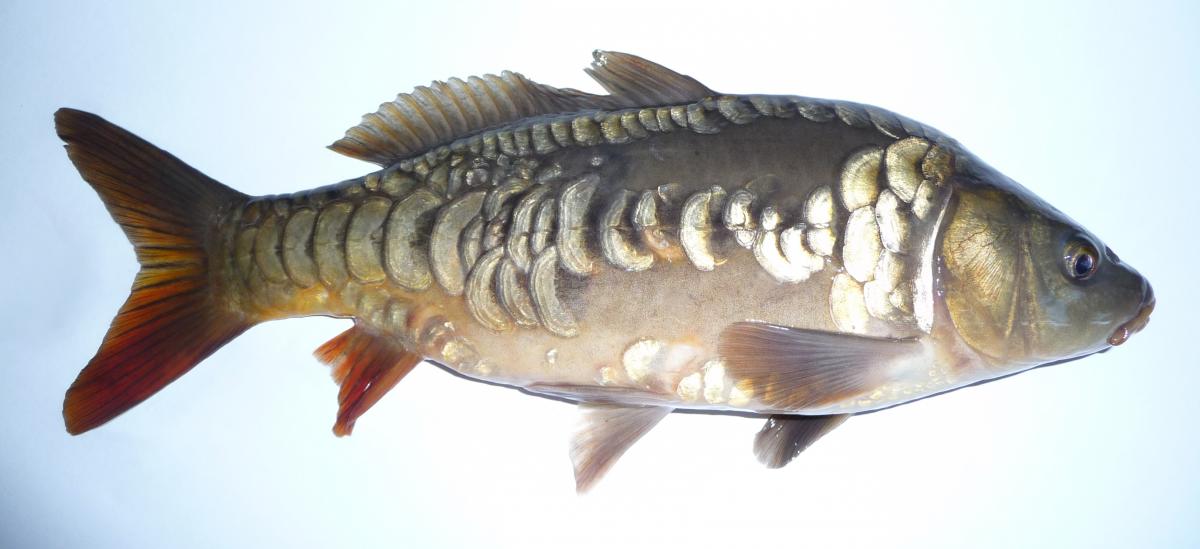I thought that I was doing my best to stay on top of evolution-related news, but now I fear that I’ve grown lazy, and for that I blame Ed Yong. Yong is a tremendously talented writer who, I can only assume based on his output, has somehow genetically engineered himself to require no sleep. We highlight his work every week in What We’re Reading posts, and I have come to rely on him to tell me what’s happening in the world of evolution research. Well, my passive reliance on Yong has been exposed because just the other week, there was a great right-up-my-alley story in the news that I missed because—you guessed it, Yong didn’t cover it—and I never would have found it if weren’t for sloth lover and blog commenter extraordinaire Steve Bowden. A huge “thank you,” therefore, to Bowden, and a sheepish acknowledgment of slothfulness from me.
The research in question involves the common carp (Cyprinus carpio), a large freshwater fish that thrives in murky low-oxygenated waters. (You might be more familiar with their fancy variants, the koi, denizens of castle moats and garden ponds everywhere.) Common carp can actually be a bit of a pain, as their omnivorous diets and robust physiology enable them to outcompete native fish and become invasive. Ironically, wild native populations of carp are considered vulnerable—so they aren’t doing well where they’re supposed to be, but they’re doing too well everywhere else.
So what’s happened with carp that has them in the news? Here are some headlines: “Carp demonstrate rapid de-evolution to get their scales back” (Phys.org); “Carp undergo ‘reverse evolution’ to get their scales back” (Science); and “Cultivated carp ‘reverse evolve,’ grow scales back” (popsci.com). Oh boy. This post could very easily be a long, ranty, Say What? but since the misconception here isn’t one I’ve explicitly covered, and because Bowden suggested a "Misconception Monday" when he wrote to invite me to, er, carp about the topic (asking “Is de-evolution even a ‘thing’?”) we’ll do it this way.
Misconception: De-evolution is a “thing.”
Correction: There is no such thing as de-evolution or re-evolution, forward evolution or reverse evolution: There is just evolution.
Here’s what happened with the carp in the headlines: Centuries ago, European monks began domesticating carp, selecting for carps without the usual full complement of stiff scales, which makes them easier to prepare and cook. The monks wouldn’t have put it this way, of course, but they bred the carp until the trait of having scant, patchy, opalescent scales became genetically fixed—meaning there was no variation in the population. The monks’ fish became known as “mirror carp.”

Here, unfortunately, we must take a short dip into jargon before moving on. It’ll be worth it, I promise. A physical trait is known as a phenotype. A given phenotype is the result of interplay between the particular genes an individual has (its genotype) and the environment. Under ordinary circumstances, an animal—be it carp, human, stinkbug, or sloth—inherits one copy of every gene from its mother and another copy from its father. The particular mix of genes inherited helps to determine the animal’s traits.
The important carp gene in this story is fgfr1a1. (Sorry—geneticists don’t really think about the public when they name things). This gene has two variations, or alleles—S and s. The particular combination of the fgfr1a1 alleles an individual carp inherits from its parents largely determines what its scale pattern will be like. When a carp gets two copies of the s gene (genotype ss) it ends up with the mirror phenotype. Through generations of selective breeding, the monks completely eliminated the S variant of fgfr1a1 in their carp populations. End result: All of their domesticated carp had fgfr1a1 genotype ss and therefore all of the carp were of the mirror variety.
In 1912, mirror carp from the monks’ stock were released into various bodies of fresh water in Madagascar so that they could be farmed and provide a stable food source. There were no native carp in these waters—just the introduced mirror carp. Fast forward to the 1950s: people started documenting the presence of fully scaled, hard-to-eat carp in Madagascar. What happened?
 In an effort to figure it out, an international team of researchers surveyed the carp and determined several things: 1) About 65% of wild-caught carp in Madagascar were fully scaled; 2) the scaled fish had derived from the original released mirror carp populations; 3) the scaled carp all still carried the ss genotype; and 4) among fish with the fixed ss genotype, there is considerable heritable variation as to number of scales.
In an effort to figure it out, an international team of researchers surveyed the carp and determined several things: 1) About 65% of wild-caught carp in Madagascar were fully scaled; 2) the scaled fish had derived from the original released mirror carp populations; 3) the scaled carp all still carried the ss genotype; and 4) among fish with the fixed ss genotype, there is considerable heritable variation as to number of scales.
So the majority of wild carp in Madagascar had a fully scaled body, but the scales didn’t result from any kind of crossbreeding with other populations of fish. And, crucially, they all still carried the genes that made their ancestors mirrored. But clearly, more than one gene contributes to scale patterns since scale number was both variable and influenced by the parents’ genes even when all the fish had the ss genotype! All the clues have been revealed. Have you figured out what happened yet?
Well, to quote Ian Malcolm in Jurassic Park, “the pirates don’t eat the tourists.” Um, make that: “life … finds a way.” Having scales is pretty important to carp—they protect the fish from predators and disease. Once the carp were back in the wild, natural selection acted on existing variation among the carp—variation provided by genes other than the one that was fixed so long ago by the monks—to increase scaliness over generations. In a blink of an eye—about forty generations—a pre-domestication phenotype had re-emerged, and fully scaled carp were happily swimming around in Madagascar. One route toward scaliness—gene fgfr1a1—was blocked, but another route had clearly opened.
Scales to no scales to scales again! Evolution had reversed itself, right? Not so fast. I’ll explain the problem with that phrase in part 2.
Are you a teacher and want to tell us about an amazing free resource? Do you have an idea for a Misconception Monday or other type of post? Have a fossil to share? See some good or bad examples of science communication lately? Drop me an e-mail or shoot me a Tweet @keeps3.

